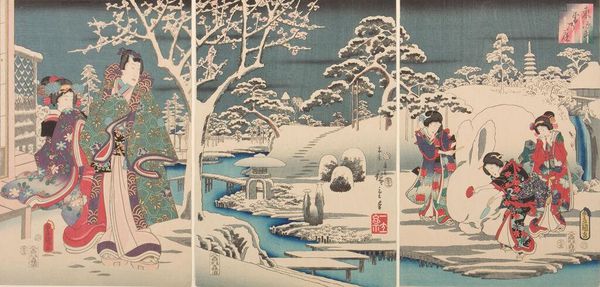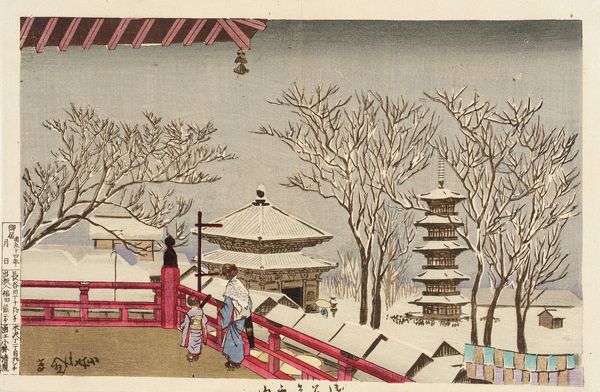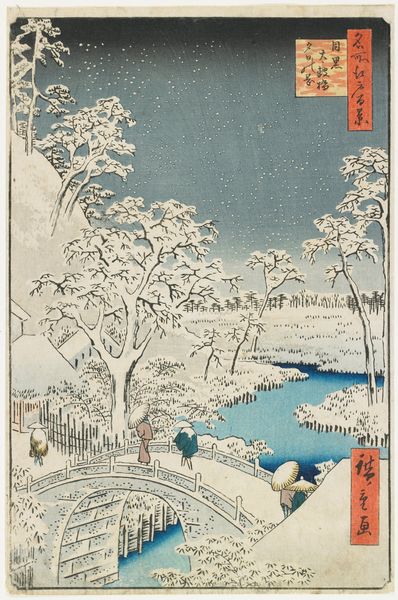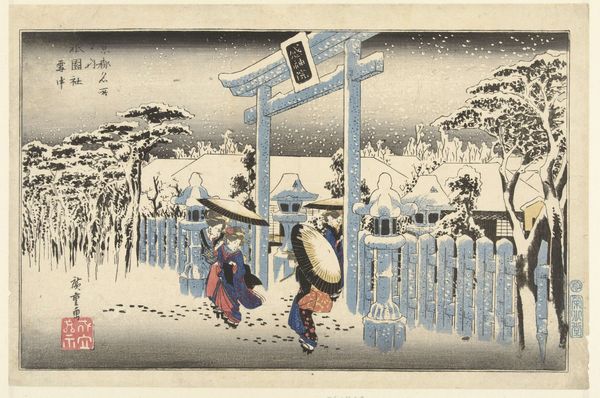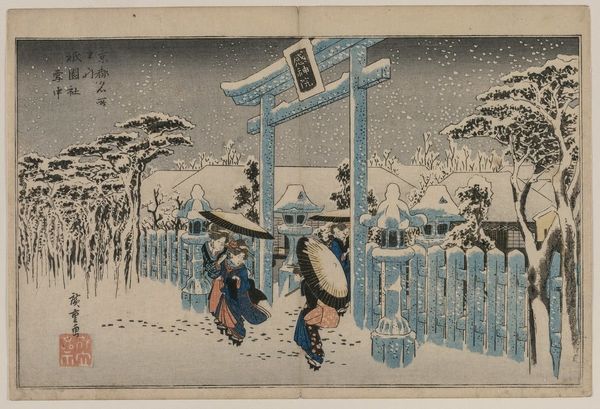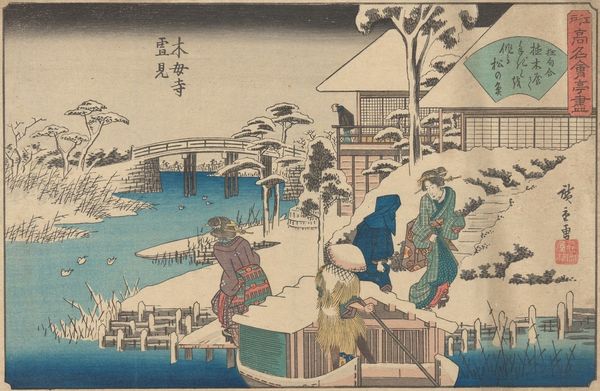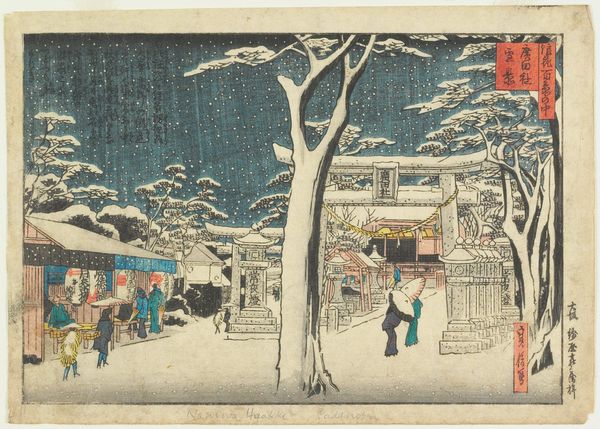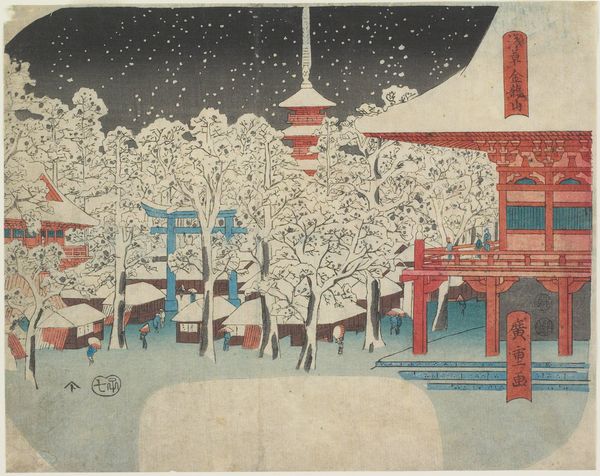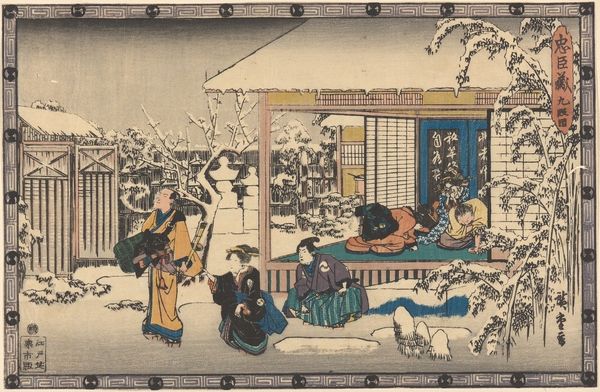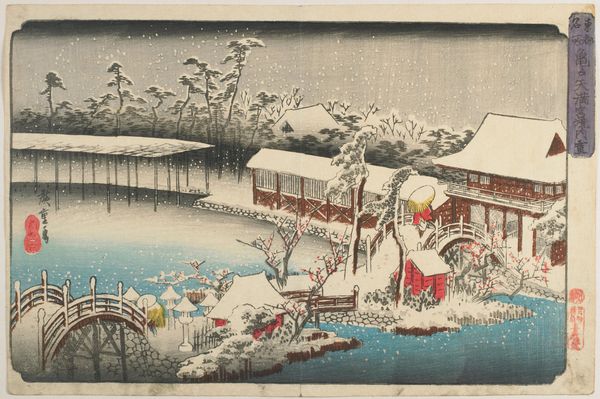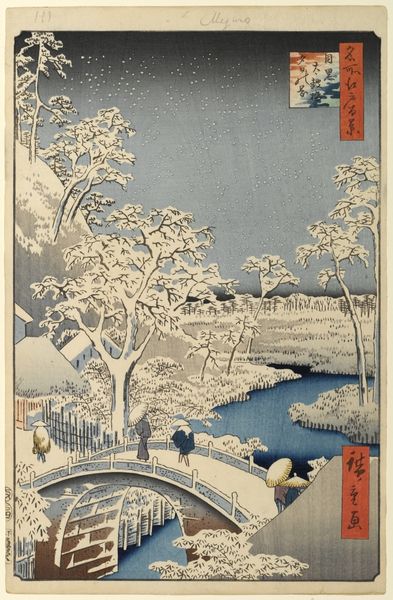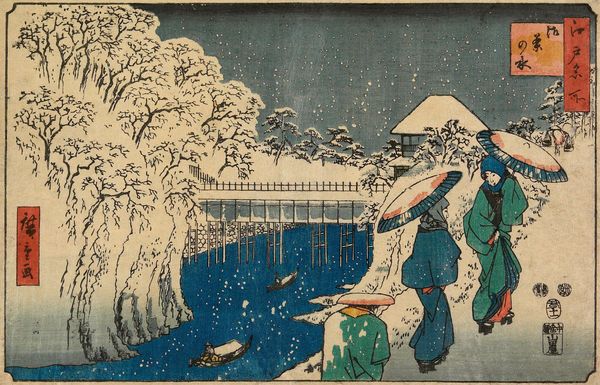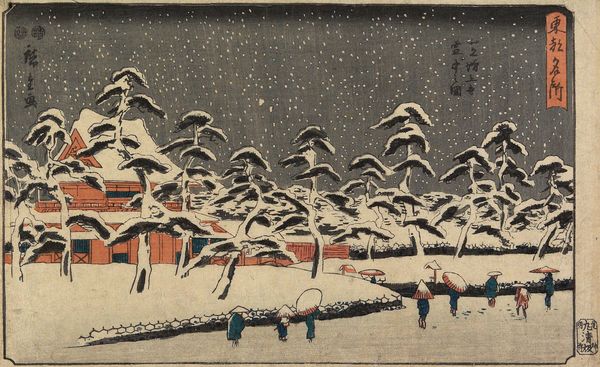
print, woodblock-print
#
water colours
# print
#
asian-art
#
landscape
#
ukiyo-e
#
figuration
#
woodblock-print
#
genre-painting
Copyright: Public Domain: Artvee
Curator: This lovely triptych is "The Snowy Garden," a woodblock print by Utagawa Hiroshige, created in 1854. What do you see? Editor: Instantly, I’m hit by this hushed feeling. It’s all soft blues and whites, so delicate and quiet. It's like the world is holding its breath. Is that a giant rabbit made of snow? Curator: You have a keen eye! Yes, those figures on the right appear to be crafting a rather large snow rabbit. These kind of scenes, showing everyday life, are part of a broader genre known as "ukiyo-e", reflecting the transient nature of beauty and pleasure. These images were designed for mass consumption. Editor: Transient beauty...perfect. It’s interesting how the figures almost melt into the landscape, yet their robes just pop with detail. It’s this weird blend of the monumental and the intimate. Do you think he meant for this to be somewhat of a political image, like many others? Curator: It is interesting to speculate on Hiroshige’s intention, however, without textual support from him, or historical documents confirming any overt statements, our position is that this imagery had strong commercial viability in ukiyo-e prints depicting pleasure activities in urban life during the Edo period. How people sought relief during the stark conditions is likely a subtle and pervasive narrative. Editor: Oh, but even in pleasure there is politics. What is consumed, what is produced. See, I'm finding more than just aesthetic delight here; I am now feeling my interpretation is now validated with how they interacted and the role they may have held in this time of prosperity, which really speaks volumes beyond the surface of "pleasure" to me. Curator: Your take truly does add a more reflective dimension to our understanding of such depictions of Japanese pleasure gardens, which can give pause in contrast to historical struggles of Edo Period Japan. Thank you for opening new pathways into how our collections can have continued resonance within evolving contemporary sensibilities. Editor: The pleasure is mine! If nothing else, this image is an ode to embracing and enjoying beauty— however simple or fleeting —especially now.
Comments
No comments
Be the first to comment and join the conversation on the ultimate creative platform.
